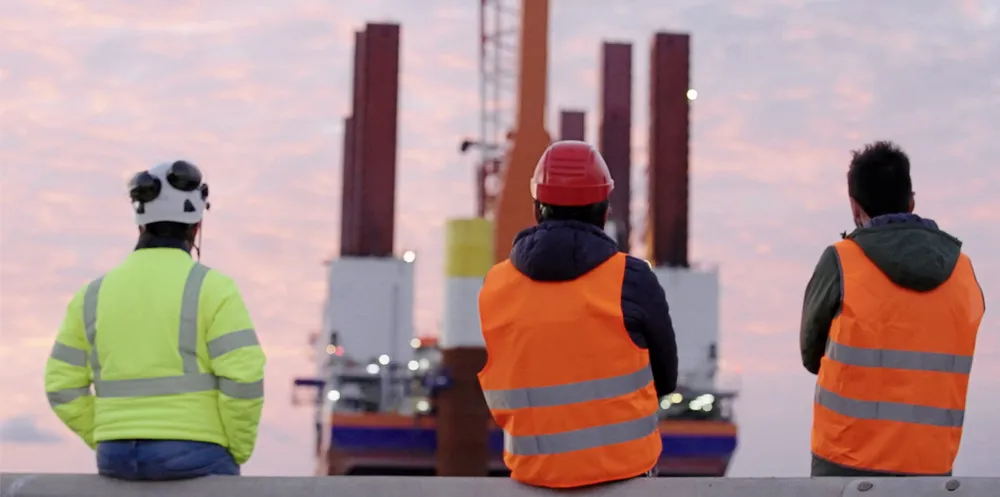Massive floating wind farm to power three million homes tests Mediterranean seabed
Italy's floating wind projects are ambitious in scale, but still dogged by regulatory uncertainty

Renexia, the renewables arm of Italy's Toto construction group, is the latest company to take a step forward with a floating wind project in the country.
Renexia said it had concluded the first phase of seafloor composition and structure surveys for a giant 2.8GW Med Wind array, described as the “Mediterranean Sea's largest offshore floating park project” with up to 190 turbines.
The offshore survey, carried out by Seattle-based Seas Geosciences, is aimed at defining the anchoring systems for the floating wind turbines that will make up the array.
It included cone penetration tests up to 40 metres below the seafloor of the Strait of Sicily, at a depth of more than 900 metres, Renexia stated, describing the primary focus as acquiring geotechnical information about geohazards at the project site and studying the most environmentally sustainable mooring and anchoring solutions.
Renexia said Med Wind will be built in stages and will generate about 9 TWh per year of clean energy, equal to the energy needs of 3.4 million households.
“All the data collected and processed by Renexia will eventually be included in the environmental impact study, about to be delivered to the Ministry of Environment Commission,” the company stated.
Moving along
Other Italian floating wind projects have moved forward on the permitting front in recent weeks.
The most prominent of these was Odra Energia, a project partnership between Milan-based renewables developer Renantis and Madrid-based BlueFloat Energy.
Odra Energia submitted environmental impact assessment (EIA) study earlier this month for a proposed 1.3GW floating offshore wind project off the southern coast of the province of Lecce.
The EIA study comprises a set of documents outlining the project, but more details are expected in February.
The €4bn project envisages 90 floating wind turbines and an expected production of about 4 TWh/year.
It will be built in the Ionian Sea, between 12km and 24km off the south-eastern coast of the Puglia region.
Ksenia Balanda, general manager of the Renantis-BlueFloat joint venture for Italy said the long preparatory phase had served to optimise a project that is one of several planned for the Ionian Sea.
This region is also home to one of Italy’s pioneering offshore wind farms, Renexia's 30MW Beleolico fixed bottom array, off Taranto, but there is wide opposition to turbines situated close to shore as on this project.
Italy's most favourable regions for wind power happen to be have with a steeply sloping shelf, so floating wind dominates offshore plans for the country.
Also in the picture in the Puglia region is Spain’s Acciona group, which reportedly requested authorisation for two wind farms.
The first, called Puglia A, would includes 67 turbines to provide more than 1GW of capacity and a second, Puglia B, with another 930MW, according to the environment ministry's website with access on permitting processes.
Intertia or imbroglio?
Progress on offshore wind in Italy has been sorely delayed by uncertainty about completion of a promised FER II regulatory framework for auctions and offtake and for the siting and permitting offshore wind, according to offshore wind specialist TGS-4C Offshore.
The Italian government is currently considering site tenders based on earlier-identified maritime areas.
To date, only 30MW of bottom-fixed offshore wind has been installed in Italy after more than ten years of development, due largely to regulatory delays, TGS-4C Offshore stated in its most recent outlook report for the offshore wind sector.
(Copyright)